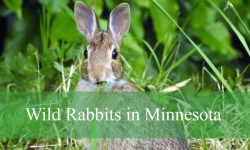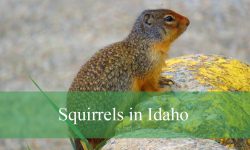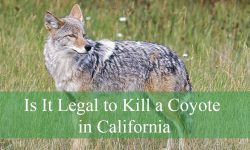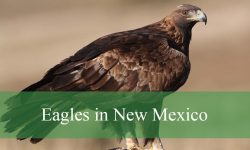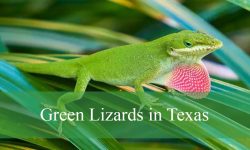Yellow birds always stand out in Nevada’s dry deserts and green valleys. Their bright colors add life to the open sky and quiet mornings.
Many of these birds visit Nevada only in spring and summer, while a few stay all year. You can spot them in parks, backyards, and near rivers across the state.
This guide will help you find and recognize 17 types of yellow birds in Nevada — from small finches and warblers to the bold yellow-headed blackbird.
Different Types of Yellow Birds Found in Nevada
American Goldfinch (Spinus tristis)
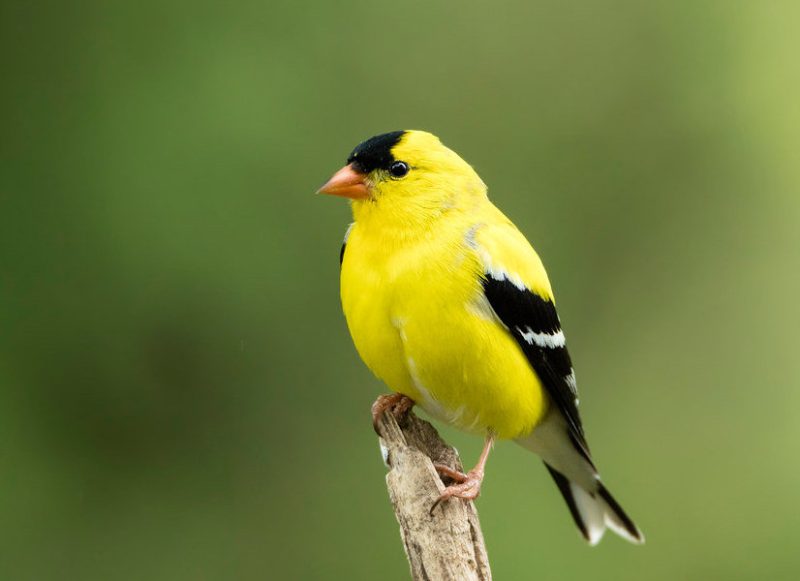
The American Goldfinch is one of the most striking yellow birds found throughout Nevada, particularly during the warmer months. Males display bright lemon-yellow plumage with contrasting black wings and cap in the breeding season, while females and winter males have a softer olive-yellow tone. This vibrant color change between seasons makes the American Goldfinch easy to recognize when they gather in open fields, meadows, and suburban gardens.
In size, the American Goldfinch is a small finch measuring about 4.3 to 5 inches (11–13 cm) long with a wingspan of up to 9 inches (23 cm). Their conical bill is short and perfect for cracking open seeds, especially from thistles and sunflowers. When flying, they show a distinctive undulating pattern — a rhythmic rise and fall motion that gives away their presence even from a distance.
Behaviorally, goldfinches are social and acrobatic, often feeding in groups. They have a cheerful, twittering song and are known for their late nesting habits, often waiting until mid-summer when thistle seeds are abundant. This timing helps them synchronize their breeding cycle with food availability, ensuring a steady supply for their young.
In Nevada, American Goldfinches can be found in open habitats such as grasslands, orchards, and near riparian zones. They are frequent visitors at backyard feeders stocked with nyjer or sunflower seeds. During migration and winter, their bright yellow fades, but their melodic presence continues to light up the arid landscapes of the state.
Lesser Goldfinch (Spinus psaltria)
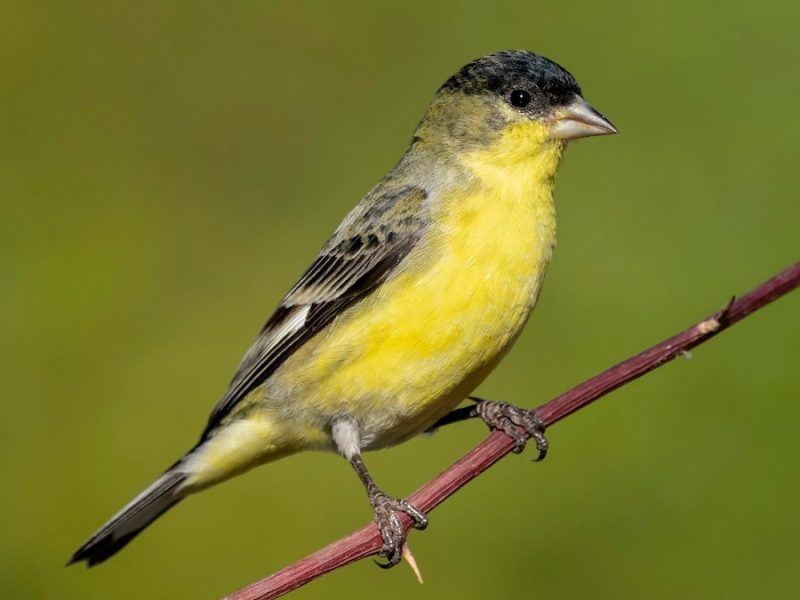
The Lesser Goldfinch is another brilliant yellow bird that thrives across much of southern and western Nevada. Males usually have a rich yellow belly and chest with a glossy black cap, back, and wings, although some populations exhibit more greenish hues. Females and juveniles appear paler, with olive-yellow underparts and grayish-green upperparts. Their small, compact bodies and cheerful colors make them a frequent favorite among birdwatchers.
This species measures about 3.5 to 4.3 inches (9–11 cm) in length and has a wingspan of roughly 7 to 8 inches (18–20 cm). The Lesser Goldfinch’s bill is small and sharply pointed, ideal for feeding on seeds from composite plants like sunflowers and dandelions. Their fluttering, bounding flight resembles that of the American Goldfinch, though they tend to stay lower to the ground.
Lesser Goldfinches are social and highly vocal, often gathering in flocks that move noisily from one food source to another. Their song is a sweet jumble of trills and whistles, often mimicking other birds. They build small cup-shaped nests in shrubs or trees and may raise multiple broods during the breeding season if food remains plentiful.
In Nevada, they are common in desert scrub, mesquite groves, and suburban areas with ornamental plantings. They are especially abundant in southern regions like Las Vegas and Henderson. Providing seed feeders and water sources often attracts these bright, lively visitors year-round.
Yellow Warbler (Setophaga petechia)
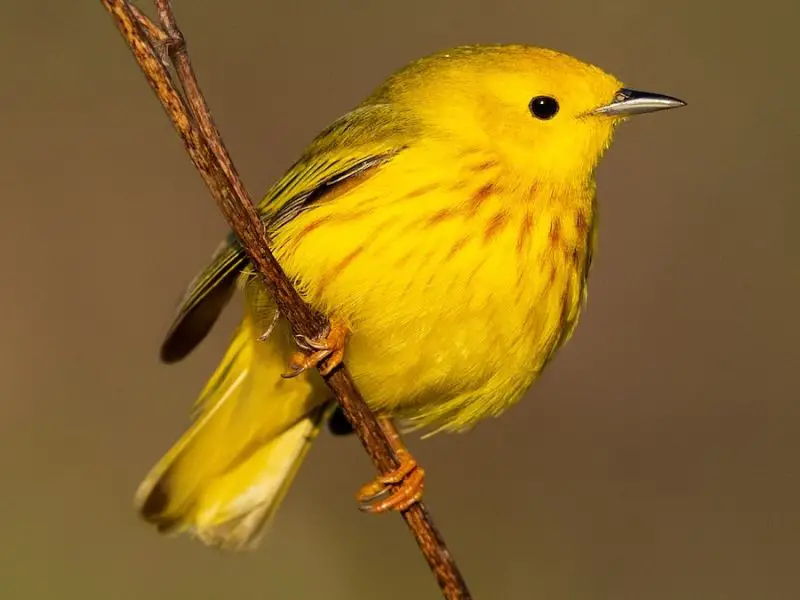
The Yellow Warbler is one of the most dazzling yellow birds in Nevada, known for its bright golden plumage and musical voice. Males are entirely yellow with subtle reddish streaks on the chest, while females are slightly duller. Their clean, unmarked face and rounded head give them a gentle, cheerful appearance that is unmistakable among migrating songbirds.
Measuring about 4.7 to 5.1 inches (12–13 cm) long with a wingspan of 7 to 8 inches (17–20 cm), this small warbler is agile and quick in flight. It primarily feeds on insects, picking them from leaves and branches or catching them mid-air. Their slender, pointed bill and lively movements make them well adapted to hunting small invertebrates among dense foliage.
Behaviorally, Yellow Warblers are territorial during the breeding season, often heard before they are seen. Their song, a series of sweet “sweet-sweet-sweeter-sweetest” notes, echoes through wet thickets and willow stands. They are highly active, flitting constantly among the branches and occasionally pausing to sing from open perches.
In Nevada, they are most commonly found near streams, marshes, and riparian zones lined with willows or cottonwoods. During migration, they pass through much of the state, stopping in parks and gardens with sufficient tree cover. Their glowing plumage and friendly song bring a burst of color to Nevada’s desert oases each spring and summer.
Common Yellowthroat (Geothlypis trichas)
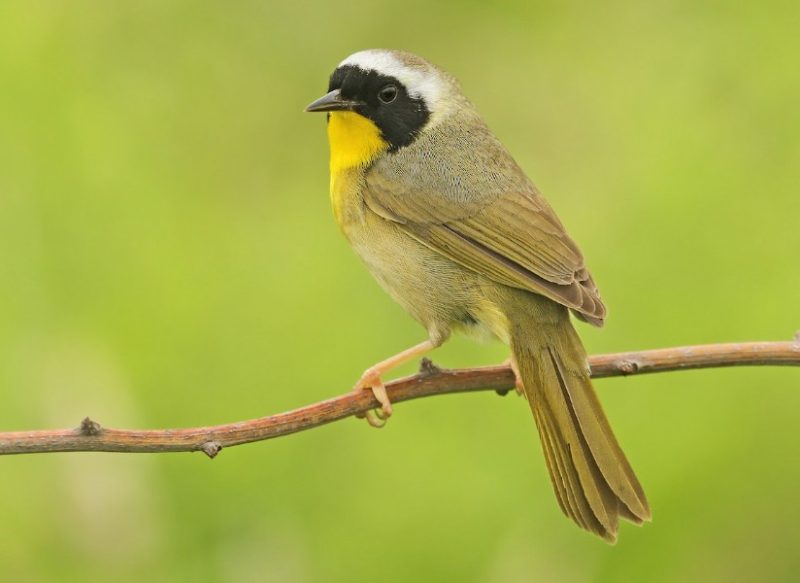
The Common Yellowthroat is a small but striking warbler recognized by its bright yellow throat and chest. Males sport a distinctive black facial mask bordered by white or gray, while females lack the mask but retain the yellow coloring. Their rounded heads, short tails, and olive-brown backs make them easy to identify once you spot the vibrant flash of yellow beneath.
At about 4.3 to 5 inches (11–13 cm) long and weighing around 10 grams, this warbler is small and compact. Its strong legs and short wings help it move efficiently through dense vegetation, where it forages for insects and spiders. The Common Yellowthroat’s call, a sharp “wichity-wichity-wichity,” is one of the most recognizable bird sounds in wetlands across North America.
In behavior, these birds prefer staying low to the ground, darting through reeds, shrubs, and cattails. They are curious yet secretive, often revealing themselves with a quick hop or brief song before disappearing again into the cover. During the breeding season, males are highly territorial and will defend their chosen habitat vigorously.
In Nevada, Common Yellowthroats frequent marshes, riparian zones, and wet meadows. They can be seen in northern and western parts of the state during the spring and summer months. Their presence is a good indicator of healthy wetland ecosystems, and their bright coloration adds a lively charm to Nevada’s waterways.
Yellow-headed Blackbird (Xanthocephalus xanthocephalus)
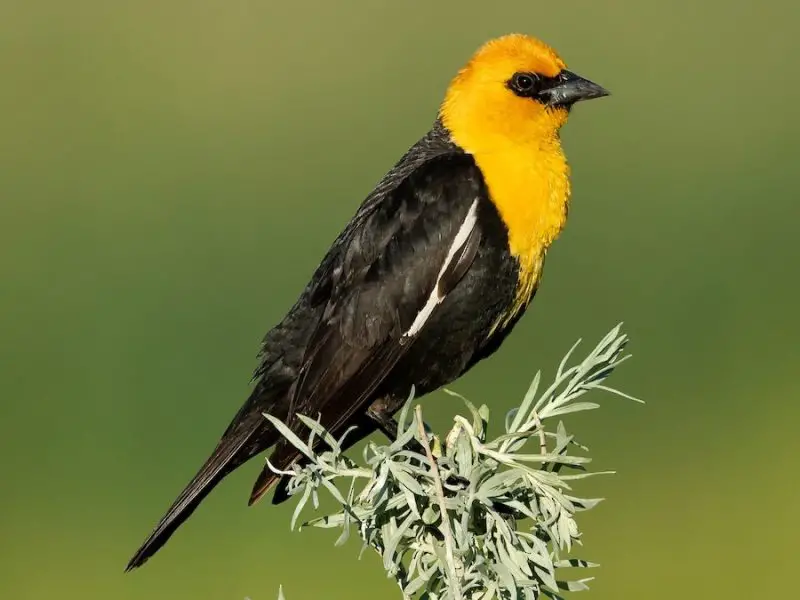
The Yellow-headed Blackbird is a bold and unmistakable resident of Nevada’s wetlands. Males have a striking appearance with a bright yellow head and chest contrasting sharply against a jet-black body. Females are more subdued, with brownish plumage and a duller yellow wash. This contrast makes them one of the most visually impressive blackbird species in North America.
These large blackbirds measure about 8.3 to 10.2 inches (21–26 cm) long with a wingspan of up to 17 inches (43 cm). Their stout, pointed bills are well-suited for cracking seeds and capturing insects. They are known for their loud, harsh calls, which are often described as sounding like a rusty gate — a sound that resonates over marshes where they nest in colonies.
Yellow-headed Blackbirds are highly social, often mixing with other blackbird species such as Red-winged Blackbirds. During the breeding season, males establish territories in cattail marshes, where they sing and display prominently to attract mates. Outside of breeding, they form large flocks that feed on grains and seeds in agricultural fields.
In Nevada, they are found mainly in northern and central wetlands, including along the Humboldt River and at Stillwater National Wildlife Refuge. They prefer shallow marshes and open water areas bordered by reeds and cattails. Their brilliant plumage and boisterous behavior make them a standout feature of Nevada’s summer birdlife.
Yellow-breasted Chat (Icteria virens)
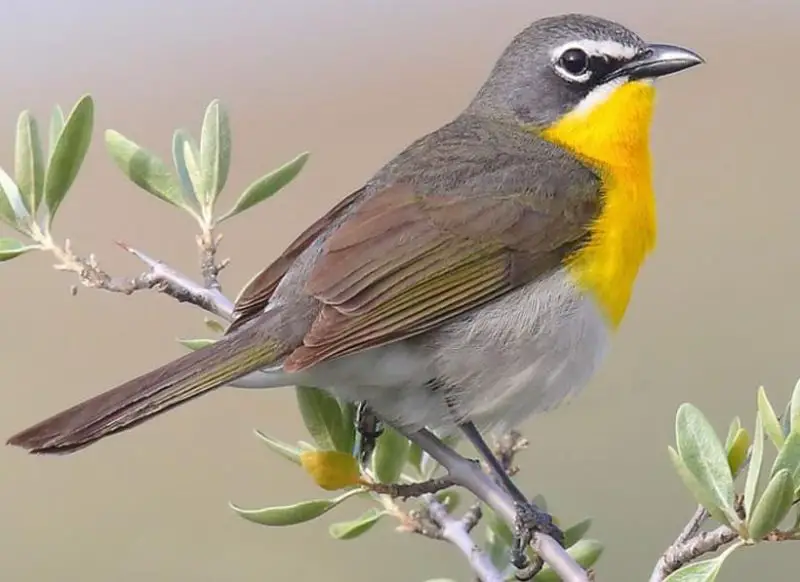
The Yellow-breasted Chat is one of the largest and most distinctive warbler-like birds found in Nevada. Its bright yellow chest and throat contrast beautifully with its olive-green back and white belly. The bird also sports a striking white eye ring and long tail, giving it a unique look among songbirds. Despite its vivid coloring, it often remains hidden in dense thickets, revealing its presence mainly through its varied and musical song.
In size, the Yellow-breasted Chat is noticeably larger than most warblers, measuring around 7.1 inches (18 cm) long with a wingspan reaching 9 to 10 inches (23–25 cm). Its bill is stout and slightly curved, adapted for a mixed diet of insects and berries. The species’ bright yellow underparts and olive tones make it blend well with leafy habitats, especially in areas with dense undergrowth.
Behaviorally, the Yellow-breasted Chat is secretive yet expressive. Males sing a complex mix of whistles, chuckles, and harsh notes, often performing aerial displays during the breeding season. They are territorial and prefer areas with thick shrubs where they can remain well hidden from predators.
In Nevada, this species is most often found in riparian corridors, overgrown desert washes, and foothill thickets. During migration, it may appear in city parks and rural edges. Although it was once classified as a warbler, it now belongs to its own unique family, reflecting its distinctive size and vocal abilities.
Western Meadowlark (Sturnella neglecta)
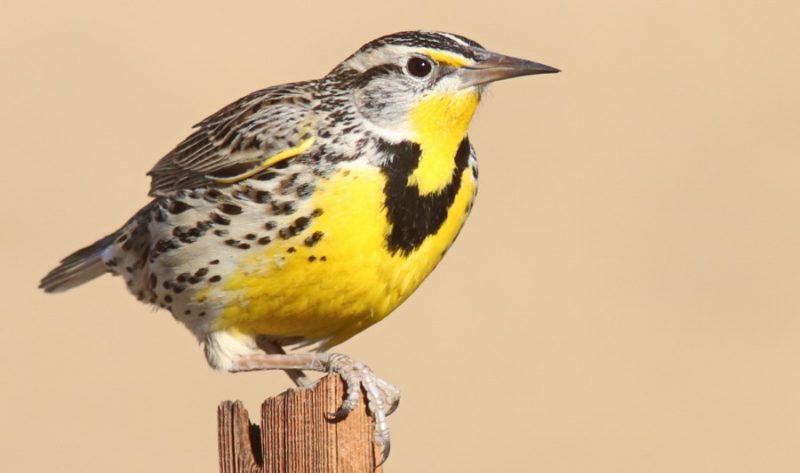
The Western Meadowlark is Nevada’s state bird and one of the most iconic yellow birds of the American West. Its bright yellow underparts, accented with a bold black “V” across the chest, make it instantly recognizable. The upperparts are mottled brown and black, providing excellent camouflage in open grasslands where it forages for insects and seeds.
Western Meadowlarks are medium-sized songbirds measuring about 8.5 to 10 inches (22–25 cm) long with a wingspan of approximately 15 inches (38 cm). They have long, pointed bills and short tails, well-suited for ground feeding. When in flight, they reveal white outer tail feathers and broad, rounded wings.
Their behavior is as distinctive as their appearance. Males perch on fence posts or low shrubs, singing rich, flute-like melodies that carry across meadows and farmland. They nest on the ground, weaving grass domes that conceal their eggs from view. Western Meadowlarks often forage in small groups, probing the soil for insects and grains.
In Nevada, these birds thrive in prairies, open fields, and agricultural lands across the state. They are especially common in northern and central regions but can also be found in the Great Basin. Their cheerful songs often herald spring, adding music and color to the wide-open Nevada landscape.
Wilson’s Warbler (Cardellina pusilla)
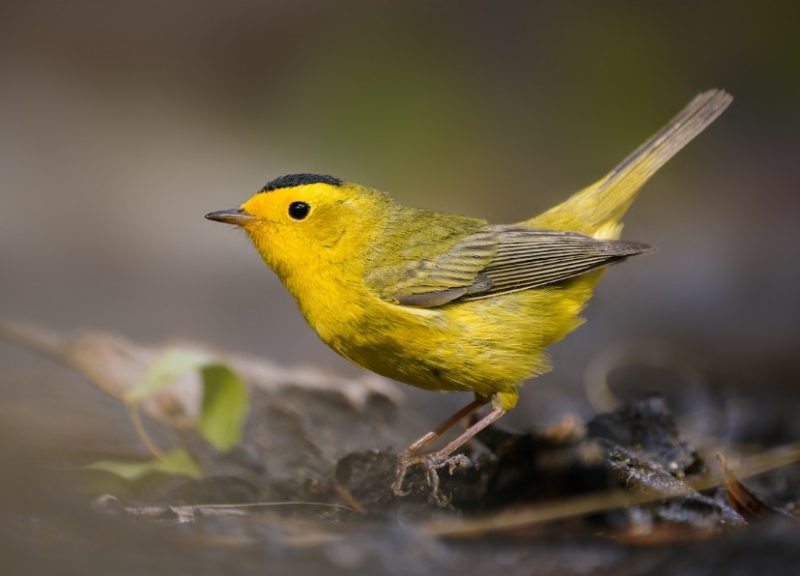
The Wilson’s Warbler is a small and lively yellow songbird, instantly recognizable by its bright yellow face and underparts. Adult males feature a striking black cap, while females and juveniles have more muted tones. Their upperparts are olive-green, making their yellow plumage stand out vividly in sunlight. This combination of bright colors and quick movements makes them a delight for birdwatchers.
They are tiny, measuring about 4.3 inches (11 cm) long with a wingspan of 6 to 7 inches (15–17 cm). Their slim, pointed bills are adapted for catching small insects, which make up most of their diet. They are active and restless, constantly flicking their tails and moving through foliage in search of prey.
Wilson’s Warblers are energetic and vocal, with a chattering, rhythmic song that helps them establish territories during the breeding season. They are typically solitary during migration but can join mixed-species flocks in winter. Despite their small size, they cover great distances, migrating between North America and Central America each year.
In Nevada, Wilson’s Warblers are most often seen during spring and fall migrations, particularly along riparian corridors and wooded parks. They prefer areas with dense vegetation near water sources. Their cheerful songs and glowing yellow feathers make them one of the most charming visitors during Nevada’s migration seasons.
Orange-crowned Warbler (Leiothlypis celata)
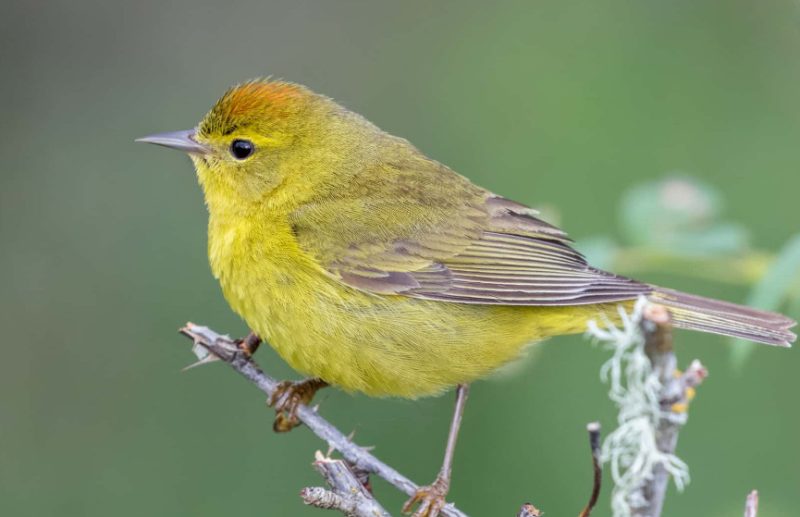
The Orange-crowned Warbler is a subtle but beautiful species often overlooked because of its muted coloration. While not as bright as some other yellow birds, it possesses a lovely yellow-green hue with olive tones across the back and flanks. The faint orange patch on the crown, which gives the bird its name, is usually hidden except during displays. Its delicate features and gentle colors make it an understated but elegant part of Nevada’s birdlife.
This small warbler measures about 4.7 to 5.1 inches (12–13 cm) long with a wingspan around 7.5 inches (19 cm). Its slender, pointed bill is ideal for picking insects and small caterpillars from leaves. The Orange-crowned Warbler’s plumage varies slightly depending on the subspecies, with birds from the western U.S. often showing more yellow and greenish tones.
Behaviorally, they are quiet and active foragers that move methodically through shrubs and trees, often staying low in the vegetation. Their song is a series of soft, descending trills, less musical than other warblers but pleasant and distinctive once learned. During migration, they may visit gardens and parks to feed on insects and nectar.
In Nevada, Orange-crowned Warblers can be found during spring and fall migration, especially in the western and southern parts of the state. They favor riparian habitats, desert scrub, and chaparral where insects are abundant. Their subtle yellowish glow and shy nature make spotting them a rewarding challenge for bird enthusiasts.
Verdin (Auriparus flaviceps)
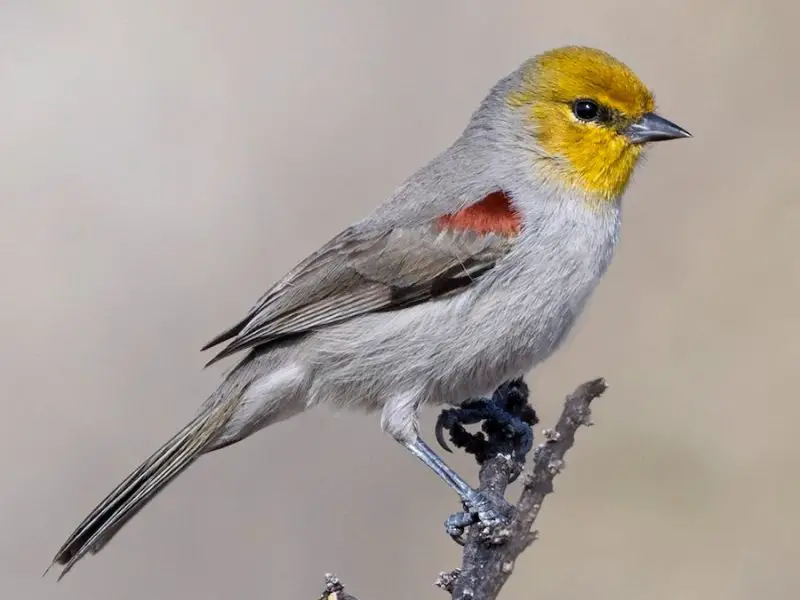
The Verdin is a tiny desert songbird easily recognized by its bright yellow head and gray body. It is one of the few small birds that thrive year-round in Nevada’s arid environments. Despite its small size, it has a bold presence, moving rapidly through desert shrubs in search of insects and nectar. The yellow face contrasts beautifully with its pale gray plumage, making it a striking sight against the desert backdrop.
Verdins measure only about 4.5 inches (11 cm) in length with a wingspan of around 6 inches (15 cm). Their fine, pointed bills are perfectly adapted for probing flowers and catching small arthropods. Males and females look similar, and both are skilled at surviving in hot, dry conditions where few other songbirds can live year-round.
Their behavior is industrious and energetic. Verdins build intricate, spherical nests from twigs and plant fibers, often with small side entrances for access. They are known to build multiple nests, some for roosting and others for breeding. Their sharp “chee” calls and constant motion make them one of the most noticeable small birds in desert scrublands.
In Nevada, Verdins inhabit desert washes, mesquite thickets, and areas with creosote bush, especially in the southern parts of the state such as Clark and Nye counties. They are year-round residents, adapting to both the heat of summer and the chill of winter. Their resilience, bright color, and resourceful nature make the Verdin a true symbol of desert life.
Hooded Oriole (Icterus cucullatus)
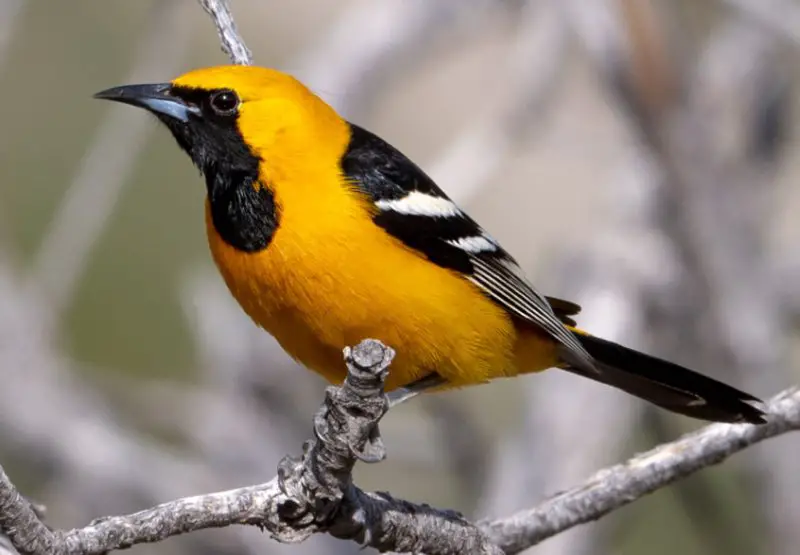
The Hooded Oriole is a vibrant bird easily recognized by its bright orange-yellow plumage and contrasting black throat, wings, and tail. Males are particularly stunning with a deep golden-orange body, while females are paler with more yellow tones. The species earns its name from the dark “hood” that covers the male’s head and neck. Its striking coloration makes it one of Nevada’s most eye-catching summer visitors.
This medium-sized oriole measures around 7 to 8 inches (18–20 cm) in length with a wingspan of about 9 to 11 inches (23–28 cm). Its slender, slightly curved bill is designed for sipping nectar and catching insects. Hooded Orioles often move gracefully among palm trees and flowering plants, occasionally hanging upside down to reach blossoms.
Behaviorally, they are curious and active, feeding primarily on nectar, fruit, and insects. They frequently visit hummingbird feeders and drink from tubular flowers such as ocotillo or agave. During the breeding season, females weave delicate hanging nests made of plant fibers and grass, often suspended under palm fronds or tree branches.
In Nevada, Hooded Orioles are mostly found in southern regions, especially around Las Vegas and along the Colorado River. They thrive in suburban areas with ornamental trees and gardens, as well as desert oases. Their combination of tropical color and melodious call adds warmth and charm to Nevada’s desert landscapes.
Bullock’s Oriole (Icterus bullockii)
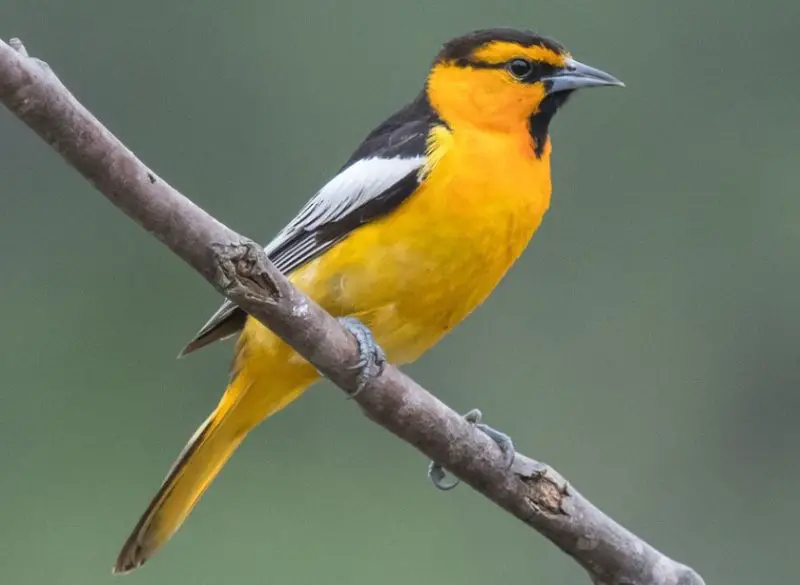
The Bullock’s Oriole is another dazzling species, featuring a bright orange body contrasted with a black crown, eye-line, and throat. Its white wing patches and long tail with black edges make it particularly distinctive in flight. Females and juveniles are yellow-orange with grayish tones, providing a softer version of the male’s fiery hues.
These orioles measure about 7 to 8.5 inches (18–22 cm) long and have a wingspan of 12 inches (30 cm). Their pointed, curved bills allow them to feed efficiently on insects, fruits, and nectar. When perched among tree branches, their vivid orange plumage glows brilliantly under the Nevada sun.
Bullock’s Orioles are known for their gregarious nature and complex vocalizations. Their song is a series of rich, flutelike whistles that vary between individuals. They build impressive hanging nests woven from fibers, grasses, and even bits of string, usually suspended from cottonwood or willow branches.
In Nevada, these orioles breed in riparian zones, open woodlands, and parks, especially in the northern and western parts of the state. They are most active from late spring to early fall before migrating south. Their presence brings both color and sound to Nevada’s summer months, making them a favorite among birdwatchers.
Prothonotary Warbler (Protonotaria citrea)
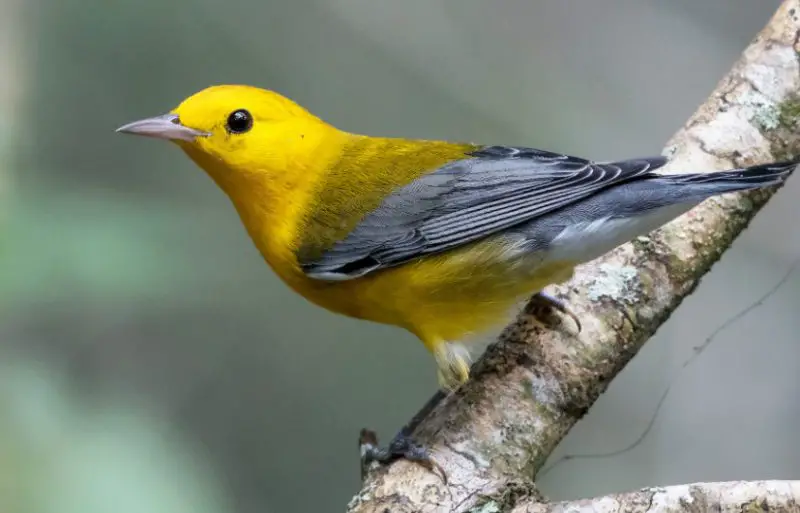
The Prothonotary Warbler is one of the most radiant yellow birds in North America, glowing with deep golden-yellow plumage across its head, chest, and belly. The wings and back are bluish-gray, providing a beautiful contrast to the bird’s luminous body. Its simple yet brilliant coloration makes it a standout species whenever spotted in Nevada during migration.
This small warbler measures about 5.1 inches (13 cm) long with a wingspan of around 8.5 inches (21 cm). Its sharp bill and strong legs are perfect for foraging in dense vegetation and near water. Unlike many warblers, the Prothonotary often explores low branches and tree cavities in search of insects and spiders.
Behaviorally, this species is calm and methodical. It often perches quietly while scanning for prey, occasionally flitting between branches in wooded wetlands. The male’s song is a clear, ringing “sweet-sweet-sweet-sweet” repeated several times, a sound that echoes softly through its preferred habitats.
In Nevada, the Prothonotary Warbler is an uncommon but exciting migrant, most likely to appear in riparian zones and wetlands in the southern and western regions during spring. It favors wooded waterways and moist environments, where its golden feathers shimmer in contrast to the green foliage.
Western Tanager (Piranga ludoviciana)
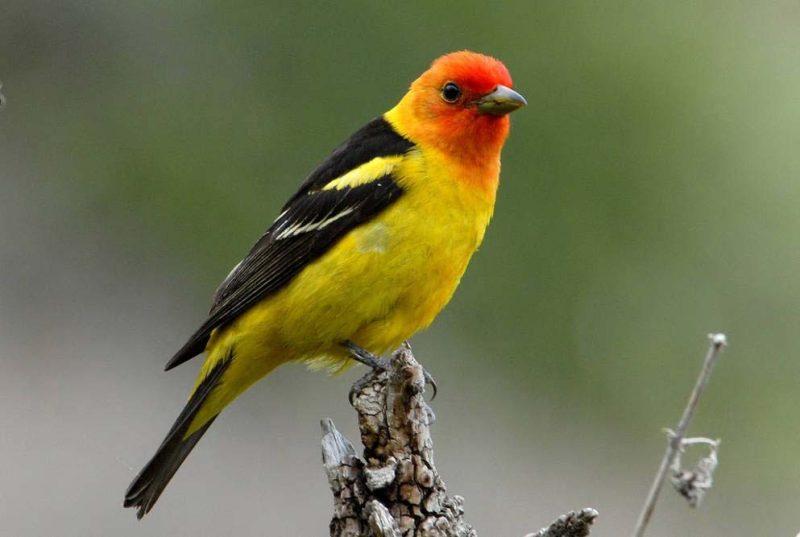
The Western Tanager is among the most colorful birds in Nevada, showcasing a stunning combination of yellow, red, and black. Males have a brilliant yellow body, fiery red head, and contrasting black wings with white wing bars. Females are more subdued, with olive-yellow tones and grayish wings, but they still display a distinctive brightness.
This medium-sized songbird measures about 7 to 7.5 inches (18–19 cm) in length with a wingspan of 11.5 inches (29 cm). Its thick bill is adapted for catching insects and occasionally feeding on fruit and nectar. The vivid red on the male’s head is produced by a unique pigment that the bird acquires from its diet — a rare trait among North American songbirds.
Western Tanagers are active and somewhat elusive. They forage high in coniferous trees, often flicking their wings and calling softly. Their song is a series of burry phrases similar to a robin’s but more clipped and raspy. During migration, they may visit gardens and parks to rest and feed on berries.
In Nevada, Western Tanagers are summer residents in forested mountain regions and wooded riparian zones. They are especially common in the Sierra Nevada foothills and other high-elevation areas. Their tropical colors are a striking contrast to Nevada’s rugged terrain, making them a memorable sight for bird enthusiasts.
Townsend’s Warbler (Setophaga townsendi)
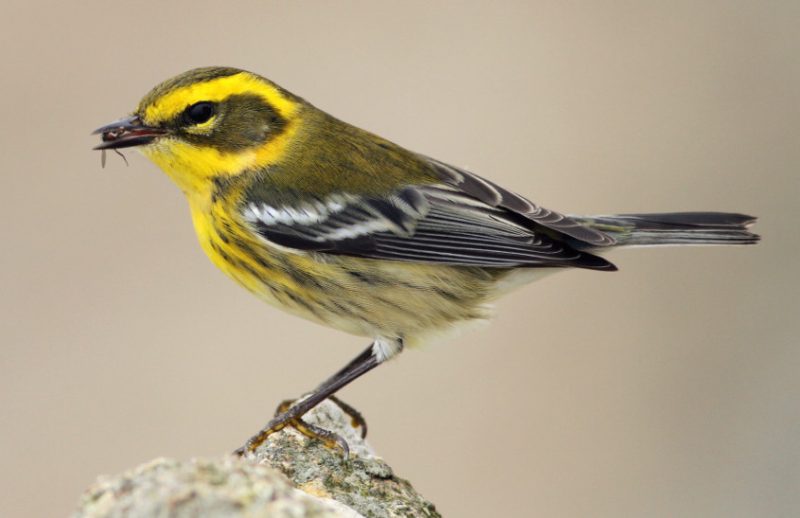
The Townsend’s Warbler is a strikingly patterned bird known for its black and yellow face and throat. The bright yellow cheeks and underparts contrast with black streaks on the sides and upper body. This combination of vivid yellow and bold markings makes it one of the most distinctive warblers in western North America.
It measures about 4.7 to 5 inches (12–13 cm) long with a wingspan of 8 inches (20 cm). Its fine, pointed bill allows it to catch insects efficiently among conifer needles and foliage. The sharp contrast between yellow, black, and olive plumage makes it easy to recognize even in dense treetops.
Behaviorally, Townsend’s Warblers are lively and alert. They flit through upper tree canopies, often joining mixed-species flocks outside the breeding season. Their song is a sweet series of rising and falling notes, slightly husky but melodic. They also make a thin “tsip” call that helps them communicate while foraging.
In Nevada, Townsend’s Warblers are mainly seen during migration in spring and fall. They frequent mountain forests and wooded parks, stopping to feed before continuing their journey. Their striking plumage and energetic behavior make them a favorite among bird photographers and naturalists passing through the state.
MacGillivray’s Warbler (Geothlypis tolmiei)
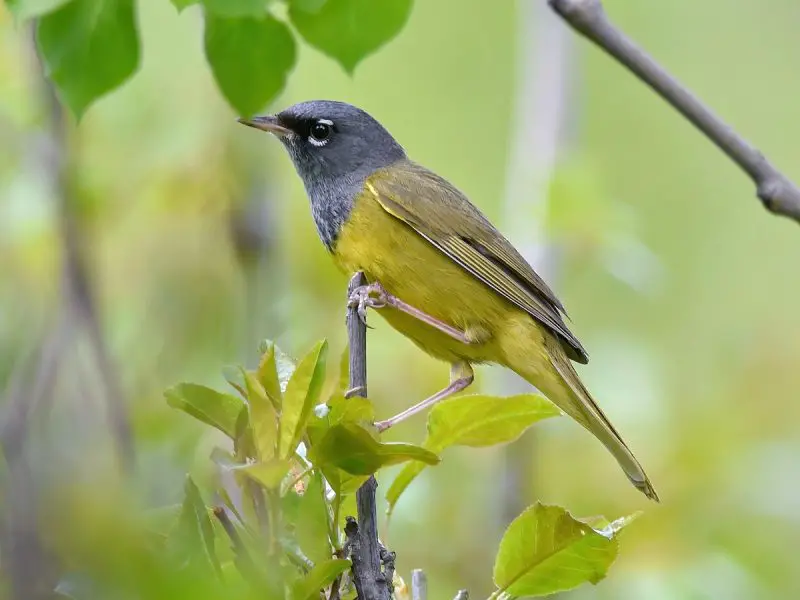
MacGillivray’s Warbler is a shy and secretive bird with a combination of gray, olive, and yellow plumage. The male has a dark gray hood and face, bright yellow underparts, and olive-green back, giving it a subtle but elegant appearance. Females are lighter in color, with softer gray tones and paler yellow bellies.
This warbler measures about 4.7 to 5.5 inches (12–14 cm) in length with a wingspan of roughly 8 inches (20 cm). Its rounded body and short tail make it well suited for navigating dense vegetation. The bird’s white eye arcs — one above and one below the eye — are a key identifying feature.
MacGillivray’s Warblers are elusive, preferring to stay hidden in thick shrubs near streams or forest edges. Their song is a musical, warbling series of notes, often delivered from within the foliage. They feed mainly on insects and spiders, occasionally catching prey in midair.
In Nevada, they breed in moist mountain habitats, especially along riparian areas and shrubby meadows. During migration, they may appear in lower elevations where cover is dense. Their bright yellow bellies and secretive behavior make spotting them a rewarding experience for dedicated birders.
Nashville Warbler (Leiothlypis ruficapilla)
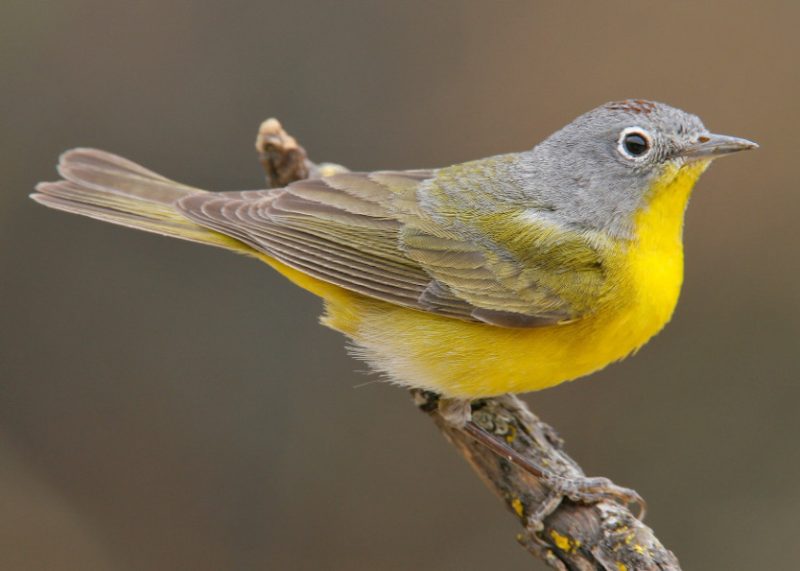
The Nashville Warbler is a small and elegant bird with bright yellow underparts, a gray head, and an olive-green back. A subtle reddish crown patch gives the species its name, though it is usually hidden from view. Its clean, simple coloration and expressive eyes make it one of the most charming warblers passing through Nevada.
This species measures about 4.3 to 5 inches (11–13 cm) in length with a wingspan of 7 to 8 inches (18–20 cm). It has a fine, pointed bill suited for gleaning insects from leaves and twigs. The bright yellow belly stands out vividly when the bird flits through shrubs or low branches in search of food.
Nashville Warblers are active and agile foragers, often seen hovering momentarily as they pluck insects. Their song is a rapid series of clear, ringing notes followed by a slower trill. They are most noticeable during spring and fall migrations when they move through woodlands, gardens, and riparian areas.
In Nevada, they occur mainly during migration, especially in northern and central regions where deciduous trees are abundant. They prefer forest edges and shrubby habitats near water. Their bright, cheerful plumage and quick movements make them a delightful highlight of Nevada’s migratory bird season.
Best Time and Places to See Yellow Birds in Nevada
Nevada’s rich diversity of landscapes — from alpine forests and riparian zones to arid deserts and agricultural lands — offers birdwatchers numerous opportunities to observe yellow-colored birds throughout the year. The best time to see yellow birds in Nevada is during spring and early summer (April to July), when most migratory species arrive for breeding. During this period, bright warblers, orioles, and tanagers can be spotted in full breeding plumage, filling the air with song and color.
In the southern regions, such as Clark County, Henderson, and the Las Vegas Valley, desert-adapted species like the Verdin and Hooded Oriole thrive. Parks, golf courses, and residential areas with palm trees and flowering plants attract nectar-feeding birds, while riparian corridors along the Colorado River host migrant warblers and orioles during the spring and fall. Early mornings are ideal for viewing, as birds are most active at sunrise when temperatures are cooler.
In the northern and central parts of Nevada, locations such as Stillwater National Wildlife Refuge, Humboldt River wetlands, and Carson Valley provide excellent opportunities to observe Yellow-headed Blackbirds, Western Meadowlarks, and American Goldfinches. These areas offer rich wetland and meadow habitats, where yellow birds gather to feed and nest. Mountain regions such as the Spring Mountains, Ruby Mountains, and Lake Tahoe Basin are also hotspots for species like the Western Tanager and Townsend’s Warbler.
During fall migration (August to October), Nevada becomes a key rest stop for warblers like the Nashville, Orange-crowned, and Wilson’s Warbler. Birders can spot them in city parks, wooded streams, and backyard gardens. Providing water sources, fruiting shrubs, or seed feeders can help attract these transient beauties, turning any green space into a lively birdwatching destination.
FAQs About Yellow Birds in Nevada
What is the most common yellow bird in Nevada?
The Lesser Goldfinch is the most common yellow bird in Nevada, especially in southern areas. These cheerful birds can be seen year-round, feeding on seeds from sunflowers, dandelions, and thistles. They also frequent backyard feeders and are known for their lively, twittering songs.
When do yellow birds migrate through Nevada?
Most yellow songbirds, including warblers, orioles, and tanagers, migrate through Nevada between April and May in spring and August through October in fall. During these months, riparian habitats, parks, and wooded mountain slopes are prime locations for spotting a variety of migrating species.
Where can I see Yellow-headed Blackbirds in Nevada?
Yellow-headed Blackbirds are found primarily in northern Nevada, especially in large marshes and wetlands such as Stillwater National Wildlife Refuge and Humboldt Sink. They nest in cattail stands and are most visible during late spring and early summer when colonies are active and vocal.
Are there any yellow birds that stay in Nevada year-round?
Yes. The Verdin and Lesser Goldfinch are two species that remain in Nevada throughout the year. The Verdin, with its yellow head and gray body, thrives in desert environments, while the Lesser Goldfinch can be found in suburban gardens and mesquite groves even in winter.
Which yellow bird has a red head in Nevada?
The Western Tanager is the yellow bird with a bright red head found in Nevada. Males display a brilliant red face and yellow body with black wings. They breed in mountain forests during summer and migrate south to Mexico for the winter.
Do yellow birds visit backyard feeders in Nevada?
Absolutely. American Goldfinches, Lesser Goldfinches, and Hooded Orioles are frequent visitors to backyard feeders. Goldfinches prefer nyjer or sunflower seeds, while orioles enjoy nectar feeders, fruit slices, and sugar water solutions. Keeping a clean water source nearby can also attract warblers and tanagers during migration.
What kinds of habitats do yellow birds prefer in Nevada?
Yellow birds in Nevada favor a variety of habitats, depending on the species. Warblers and Tanagers seek out riparian and forested areas, Orioles prefer palm groves and suburban gardens, and Blackbirds thrive in wetlands and open meadows. Maintaining native plants and minimizing pesticide use helps create bird-friendly environments across these habitats.
Can I find yellow warblers in Nevada’s desert areas?
Yes, but mainly near water sources. Yellow Warblers and Wilson’s Warblers can appear in desert riparian zones, particularly during migration. They are drawn to willows, cottonwoods, and flowering shrubs that provide food and shelter during their long journeys.
Which bird has a yellow breast and sings a complex song?
That would be the Yellow-breasted Chat. Known for its rich yellow chest and musical song, this bird performs a medley of whistles, cackles, and churring notes from deep within dense shrubs. It’s often heard before it’s seen due to its secretive nature.
Are there conservation efforts for yellow birds in Nevada?
Yes. Wetland and riparian restoration projects, such as those led by the Great Basin Bird Observatory and Nevada Department of Wildlife, play a crucial role in preserving habitats for yellow birds. Protecting native vegetation and managing water resources help maintain breeding and migratory stopover sites for these colorful species.
Final Thoughts
Yellow birds bring brightness and vitality to Nevada’s diverse habitats, from mountain forests and lush wetlands to desert oases. Their vivid plumage, cheerful songs, and fascinating behaviors make them a delight to observe for both novice birdwatchers and experienced ornithologists. Whether it’s the glowing American Goldfinch feeding on thistle seeds, the graceful Bullock’s Oriole weaving its hanging nest, or the elusive MacGillivray’s Warbler hiding in riparian shrubs, each species adds a splash of sunshine to the state’s wild beauty.
Exploring Nevada’s natural spaces during spring and summer offers the best chance to witness this colorful spectacle. With a bit of patience and a keen eye, you can discover the golden hues and lively spirit of these remarkable birds that call Nevada home — if only for a season.

